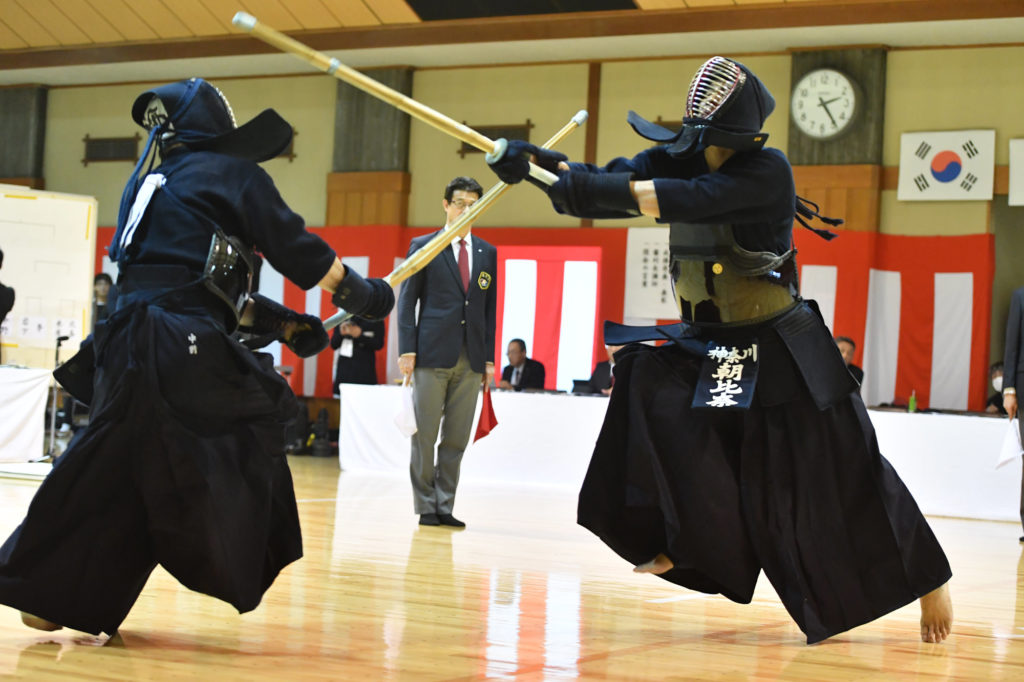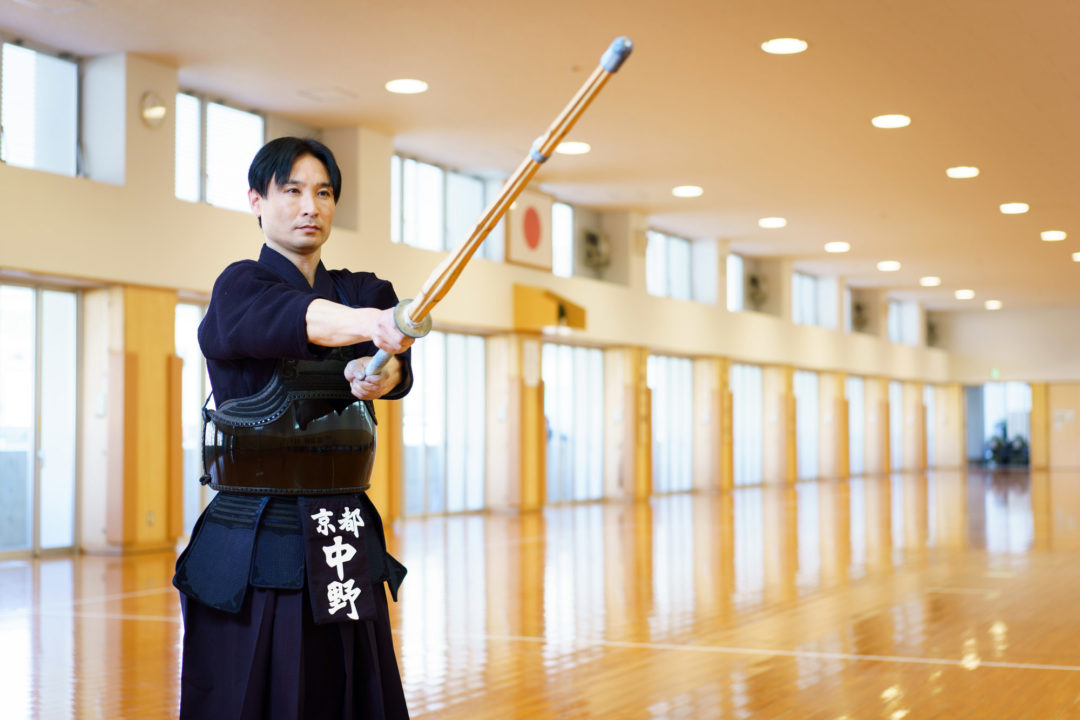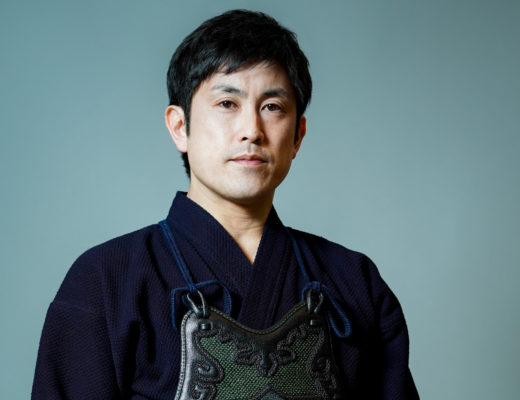2020.5 KENDOJIDAI
Nakano Takahiro won the first Yokohama 7th Dan tournament in the Reiwa-era. Faced with an injury that could bring a crisis to any athletes’ life, he fought one Shiai after another with resolve and there was victory at the end of the road. We asked him to look back on his road to victory, including the trial and error of the last few years.
profile
Nakano Takahiro, Kyoshi 7th Dan
Born in Kyoto City, Kyoto Prefecture in 1980, 40 years old. Took up the Shinai at Ooe Seishinkan and proceeded to Hiyoshigaoka High School, Hosei University, then served as a police officer for Kyoto Prefecture. His accomplishments include All-Japan Championship Best 8, WKC Participation, All Japan East-West Contest Tournament participation, National Sports Tournament 2nd place, All Japan Prefectural Competition 2nd place, National Police Team Championship first division 1st and 3rd place, Individual 2nd place twice. He won at his first participation in the Yokohama 7th Dan in February of this year. Currently working for the Maizuru Police Station in Kyoto Prefecture.
Resolve in the 7th Dan tournament
A Men strike without hesitation
The All Japan Invitational 7th Dan Championship, which was held for the first time in the new Reiwa era, ended with the victory of Nakano Takahiro, who was participating for the first time. Among the 7th Dan swordsmen representing Japan and South Korea, slender Nakano reached the top with his light movement and sharp strikes.
“I received the invitation half a year ago. I had almost no chance to do Shiai after my retirement from the Tokuren in 2015, and I also received an injury to my leg, so I started preparing with resolve and determination. I wanted to do Shiai without embarrassment, and there were some competitors with whom I fought together at the WKC. Because I was seriously injured before the WKC which had hampered the team, I felt I could redeem myself by crossing swords with them and getting results.”
Nakano is currently in the position of being engaged in general affairs as the chief of police at the Maizuru Station which is about two hours away from Kyoto and he is usually overwhelmed by work. As much as time allows, he goes on four-hour round trips to Kyoto to do Keiko and improve his condition.
He said he was feeling good on the day of the match: “Recently, I didn’t really have a chance to do Shiai and I was a bit worried about my Shiai intuition but I think that my movement wasn’t bad. However, Gonpei Sensei struck me in the opening Shiai with a Hiki technique and this taught me how unforgiving the game was. The fact that I was hit with a Hiki technique means that I should not lose focus there. However, even if I lost once I still had a chance to move up in qualifying league so I wasn’t impatient. I thought I could still come back from a loss.”
In the 7th Dan tournament, the top 2 players who have won a qualifying league of 4 to 5 players advance to the quarterfinals. Nakano was in a league of 5 players and after fighting against Gonpei he drew in his Shiai against Furukawa Kosuke and Iwashita Tomohisa. He was in a difficult situation with 1 loss and 2 draws with the final Shiai of his league ahead of him.
“My old classmate Furukawa and I encouraged each other by saying “We’re gonna do this!” and then I faced a Shiai with Wako Sensei. I was intending to score two Ippons. In retrospect it would have been sufficient to take only one but I think it was good to have my eyes set on two.”
In the final match of the league with Wako, Nakano landed an eye catching Men on his first strike and his resolve started to show. In the mid game he brilliantly landed a Do strike for a two Ippon victory and secured his league advancement.
“I have an injury to my leg and when I strike Do on the right side, my movement inevitably slows down, so I strike only the left side. Kodama Yoshiaki, a former director of the Kyoto Police Department used to strike the left Do a lot so have been studying and remembering his movements. Maybe this was the result.”
After this battle, his Kendo has sharpened even further. In the quarterfinals and semifinals as well, he won with two Ippons against both Asahina Kazuo and Uchimura Ryoichi and proceeded to the finals. Nakano’s trademark Kote technique stood out. His opponent in the finals was Iwashita, a senior of his at the university.
“I had cramps in my hands and feet and I was tired in the finals, but I had no hesitation.”

He kept on attacking while staying true to his style and with the intent of being taught. He fought his battles one by one with a determined resolve and without hesitation.
Surprisingly, this is his first individual title.
“In my Kendo life so far, I won really a lot of 2nd places. I took 2nd place in the National Police Championship individuals, the National Sports tournament, All Japan Prefectural Tournament and the Inter-High individuals. I was told by my Senpai that I should have the strength to aim for a title. Therefore, I wanted to win as a token of gratitude. It is a mystery to me that I won this championship when I couldn’t have enough time for Keiko rather than when I was doing a lot of training in the Tokuren. My feelings about Kendo haven’t changed. Fortunately, I am very blessed with my work environment, my colleagues and seniors who warmly sent me off to this tournament and they enable me to proceed with my work. Thanks to that, I was able to concentrate on my Keiko. I think I was able to win the championship thanks to everyone.”
Keiko with limited time:
4 hour round trips for Keiko with the Tokuren
Nakano is currently working at the Maizuru Police Station which is about two hours away from Kyoto City. As the chief officer, he is in charge of general affairs for all staff.
Regarding his Kendo environment, he is in the position of instructing general officers in arresting techniques at the Maizuru station, and he has to commute for his Keiko.
Before this championship in particular, he often went to Kyoto city and asked his Kohai of the Kyoto Prefectural Police and Tokuren members for cooperation.
“Matsui Yuichi, Goya Ryu, Inoue Hitoshi, and Suehiro Yusuke in particular helped me a lot on free days. They had to spend their free time on Keiko with me, so I burdened director Takahashi Hideaki, coach Tadao Nishikawa and the Tokuren members. However, they were very forthcoming by inviting me to their regular Keiko as well. The Tokuren training is always carefully planned and done, so keeping that in mind I can’t thank them enough for understanding.”
They mainly rehearsed league scenarios with 4 or 5 people for the 7th Dan tournament: “After warming up, we played league Shiai, then reviewed and examined the results before doing Keiko on techniques. They stuck with me for a long time. The Tokuren members went along with my whims for many days.”
“There was mutual reflection and consideration and since I am also an instructor I gave them advice as well. The pressure is different when it comes to a Shiai, so I said things like “I wasn’t able to strike you in that scenario but the current active Tokuren members would have.” That comment also laid bare my own shortcomings. While giving this advice I reflected on myself, thinking that my body wasn’t moving which prevented me from striking. I think we were learning from each other.”
The Tokuren members were willing to participate in the Keiko while they had to take care their physical condition, their families and various other matters.
“I sometimes thought that it would be difficult for them to work with me as their Senpai, but I was grateful that my Kohai were willing to be proactive in inviting me for Jigeiko. It was hard to practice with the Tokuren members because they train so much but I was able to do high-quality Keiko. Without this Keiko I wouldn’t have been able to win the championship. I am truly blessed with the support of my family and friends at work. I must not forget this feeling of gratitude.”
Having won the championship, Nakano is grateful to the Maizuru police station, the Tokuren members and director Takahashi Hideaki among others. Furthermore, he feels grateful to his family as well as all the other people who enabled him to do Kendo.
Major injury experience
A provided environment
In 2012 at 33 years old, Nakano Sensei got selected as a Japanese representative for the upcoming WKC in May.
However, there would be a big change in Nakano Sensei’s Kendo life: He had a total tendon detachment rupture. Unlike a normal Achilles tendon rupture, both ends of the hamstring connections to the bone ruptured completely.
After eight hours of major surgery, he was hospitalized for two months in a hospital in Saitama Prefecture and was unable to perform Kendo for two years.
“I was bedridden for two months without any physical movements. I wanted to do a little Suburi but this made me want to use my feet so I barely touched my Shinai. The early rehabilitation was simple: flexing my glutes. I hadn’t put my Men on for two years after surgery.”
The rest of this article is only available for Kendo Jidai International subscribers!





